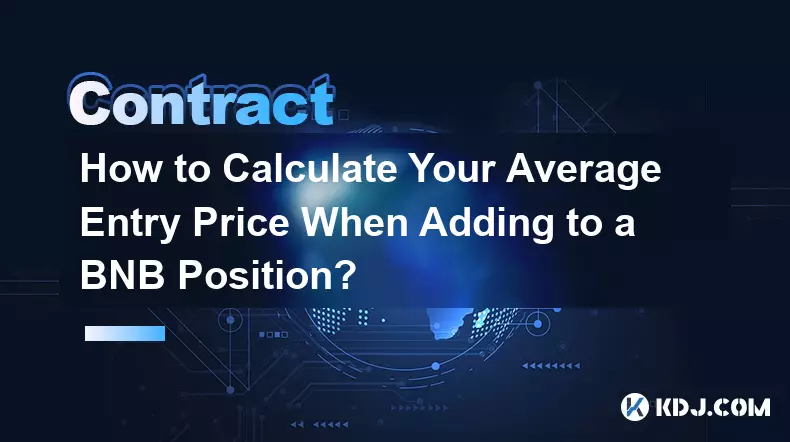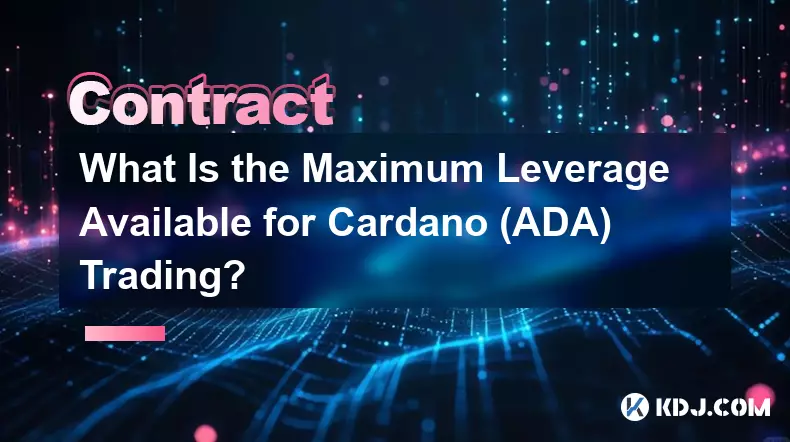-
 bitcoin
bitcoin $114206.058833 USD
-0.82% -
 ethereum
ethereum $4129.796871 USD
-1.31% -
 tether
tether $0.999964 USD
0.00% -
 xrp
xrp $2.640265 USD
-0.68% -
 bnb
bnb $1141.700384 USD
-0.18% -
 solana
solana $200.380665 USD
-2.05% -
 usd-coin
usd-coin $0.999888 USD
0.01% -
 dogecoin
dogecoin $0.200706 USD
-3.43% -
 tron
tron $0.299112 USD
-0.60% -
 cardano
cardano $0.668491 USD
-2.72% -
 hyperliquid
hyperliquid $46.924669 USD
-2.72% -
 chainlink
chainlink $18.286013 USD
-2.66% -
 bitcoin-cash
bitcoin-cash $555.734639 USD
-0.58% -
 stellar
stellar $0.323999 USD
-2.74% -
 ethena-usde
ethena-usde $0.999169 USD
0.00%
How to read the order book for DOGE contracts?
A thick DOGE futures order book signals high liquidity, reducing slippage and enabling smoother trade execution amid volatile market conditions.
Oct 22, 2025 at 08:58 am

Understanding the Structure of a DOGE Futures Order Book
1. The order book for DOGE futures displays real-time buy and sell orders across various price levels. It is typically split into two sides: the bid side (buyers) and the ask side (sellers). Each side shows the quantity of DOGE contracts traders are willing to buy or sell at specific prices.
2. Prices on the bid side are usually lower than the current market price, reflecting what buyers are willing to pay. Conversely, prices on the ask side are higher, indicating what sellers want in return. The narrowest gap between the highest bid and the lowest ask is known as the spread, which reflects market liquidity.
3. Depth is visualized through a chart or list format showing cumulative volume at each price point. A deep order book with large volumes on both sides suggests strong market interest and reduced slippage during trades.
4. Market makers often place limit orders on both sides to profit from the spread. Their presence can stabilize pricing but may also create artificial resistance or support if clustered at key levels.
5. Sudden spikes in either bids or asks can signal upcoming momentum. For instance, a cluster of large buy orders just below the current price might indicate a floor forming, while a wall of sell orders above could cap upward movement.
Interpreting Order Flow and Liquidity Signals
1. Rapid changes in the order book, such as the sudden removal of large sell walls, can precede sharp price movements. Traders watch for these 'order cancellations' as potential signs of manipulation or breakout anticipation.
2. High liquidity at certain price levels acts as magnets or barriers. When price approaches a zone with dense orders, it may slow down, reverse, or accelerate depending on whether those orders get absorbed or trigger stop-loss cascades.
3. Time & Sales data, when paired with the order book, reveals the actual executed trades. This helps distinguish between passive resting orders and aggressive market orders that move the price.
4. Imbalance between buy and sell pressure becomes evident when one side dominates in volume. A heavy bid stack with minimal asks often leads to short squeezes if enough market buy orders enter.
5. Whale activity is detectable through unusually large limit orders. These aren’t always genuine; some are 'ghost' orders meant to influence sentiment before being canceled.
Using Order Book Data for Trade Execution Strategies
1. Scalpers rely on microstructure signals from the DOGE contract order book to enter and exit within seconds. They aim to capture the bid-ask spread or ride small imbalances before they vanish.
2. Placing limit orders just behind the best bid or ask allows traders to avoid fees on certain exchanges and improve fill probability during volatility. This technique requires precise timing and monitoring.
3. Breakout traders analyze consolidation patterns in the order book. When price compresses near a dense cluster of orders, a burst through that zone often triggers automated executions and leveraged positions.
4. Iceberg detection involves identifying repeated small-sized orders at the same price level, hinting at a larger hidden order. Advanced traders use this to anticipate sustained buying or selling pressure.
5. Latency-sensitive strategies require direct exchange connections or APIs with low delay. Even a few milliseconds matter when competing to front-run large fills or exploit fleeting arbitrage.
Frequently Asked Questions
What does a thick order book mean for DOGE futures?A thick order book indicates high liquidity, meaning there are substantial buy and sell orders across multiple price points. This reduces slippage and makes it easier to enter or exit large positions without drastically affecting the price.
How can I tell if an order is fake or real?Real orders remain in the book over time and eventually execute or cancel normally. Fake or spoofed orders often appear suddenly at strategic levels and disappear before execution, designed to manipulate perception rather than trade.
Why do prices sometimes jump despite no visible change in the order book?Price jumps can occur due to hidden orders, rapid market order flows, or matching algorithms on the exchange that process trades off-display. Also, derivatives markets react instantly to macro news or correlated assets like BTC.
Can I access historical order book data for analysis?Yes, many crypto data providers and exchanges offer historical depth data for DOGE futures. This data is used for backtesting strategies, training machine learning models, and understanding past market structure behavior.
Disclaimer:info@kdj.com
The information provided is not trading advice. kdj.com does not assume any responsibility for any investments made based on the information provided in this article. Cryptocurrencies are highly volatile and it is highly recommended that you invest with caution after thorough research!
If you believe that the content used on this website infringes your copyright, please contact us immediately (info@kdj.com) and we will delete it promptly.
- Essex Post Office, 5p Coins, and King Charles: A Royal Mint Revelation!
- 2025-10-23 10:30:16
- Waymo's Newark Airport AV Tests: Alphabet's AI Gamble Pays Off?
- 2025-10-23 10:30:16
- King Charles 5p Coins: A Royal Flush in Your Pocket?
- 2025-10-23 10:35:18
- Solana, Crypto Advisory, and Forward Industries: A New York Minute on the Future of Finance
- 2025-10-23 08:51:22
- MAGACOIN: Ethereum Whales Dive into the Hottest Presale of 2025
- 2025-10-23 08:51:22
- Kadena's End of the Road? KDA Token Plummets Amid Project Abandonment
- 2025-10-23 08:55:34
Related knowledge

How to Calculate Your Average Entry Price When Adding to a BNB Position?
Oct 28,2025 at 12:24am
Understanding the Concept of Average Entry Price1. The average entry price is a crucial metric for traders who accumulate positions in assets like BNB...

What Is the Maximum Leverage Available for Cardano (ADA) Trading?
Oct 26,2025 at 12:18pm
Understanding Leverage in Cardano (ADA) Trading1. Leverage allows traders to control a larger position using a smaller amount of capital. In the conte...

What Are the Fees Involved in Trading Solana (SOL) Perpetual Swaps?
Oct 26,2025 at 07:36am
Fees Structure in Solana Perpetual Swap Trading1. Trading perpetual swaps on Solana-based decentralized exchanges involves several types of fees that ...

How to Trade Ethereum (ETH) Breakouts with High Leverage Safely?
Oct 26,2025 at 02:19am
Understanding High Leverage in Ethereum Trading1. High leverage allows traders to control large positions with relatively small capital, amplifying bo...

How to Set Multiple Take-Profit Orders for a Single BNB Position?
Oct 27,2025 at 05:00pm
Understanding Multiple Take-Profit Strategies in BNB Trading1. Traders in the cryptocurrency market often seek to maximize gains while minimizing emot...

A Guide to Swing Trading XRP Perpetual Contracts
Oct 28,2025 at 09:00am
Understanding XRP Perpetual Contracts1. XRP perpetual contracts are derivative financial instruments that allow traders to speculate on the price of X...

How to Calculate Your Average Entry Price When Adding to a BNB Position?
Oct 28,2025 at 12:24am
Understanding the Concept of Average Entry Price1. The average entry price is a crucial metric for traders who accumulate positions in assets like BNB...

What Is the Maximum Leverage Available for Cardano (ADA) Trading?
Oct 26,2025 at 12:18pm
Understanding Leverage in Cardano (ADA) Trading1. Leverage allows traders to control a larger position using a smaller amount of capital. In the conte...

What Are the Fees Involved in Trading Solana (SOL) Perpetual Swaps?
Oct 26,2025 at 07:36am
Fees Structure in Solana Perpetual Swap Trading1. Trading perpetual swaps on Solana-based decentralized exchanges involves several types of fees that ...

How to Trade Ethereum (ETH) Breakouts with High Leverage Safely?
Oct 26,2025 at 02:19am
Understanding High Leverage in Ethereum Trading1. High leverage allows traders to control large positions with relatively small capital, amplifying bo...

How to Set Multiple Take-Profit Orders for a Single BNB Position?
Oct 27,2025 at 05:00pm
Understanding Multiple Take-Profit Strategies in BNB Trading1. Traders in the cryptocurrency market often seek to maximize gains while minimizing emot...

A Guide to Swing Trading XRP Perpetual Contracts
Oct 28,2025 at 09:00am
Understanding XRP Perpetual Contracts1. XRP perpetual contracts are derivative financial instruments that allow traders to speculate on the price of X...
See all articles










































































